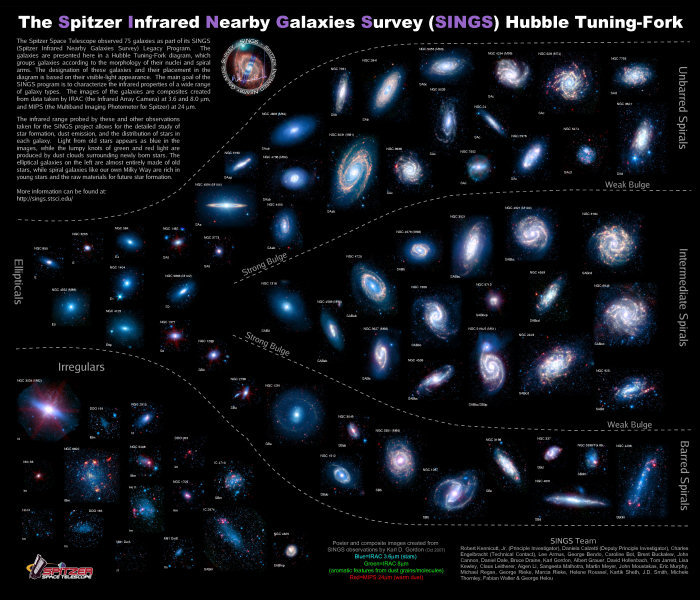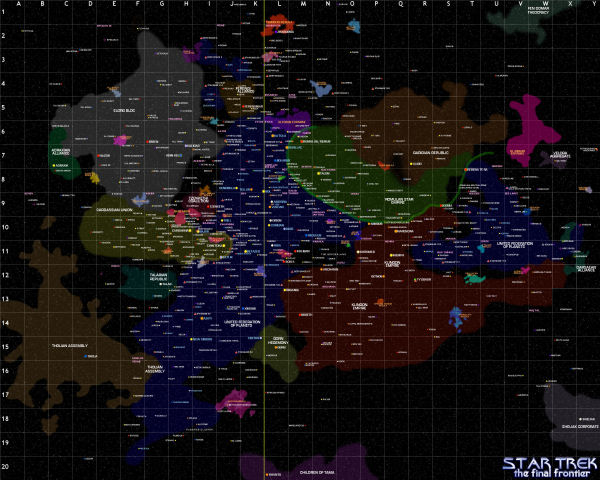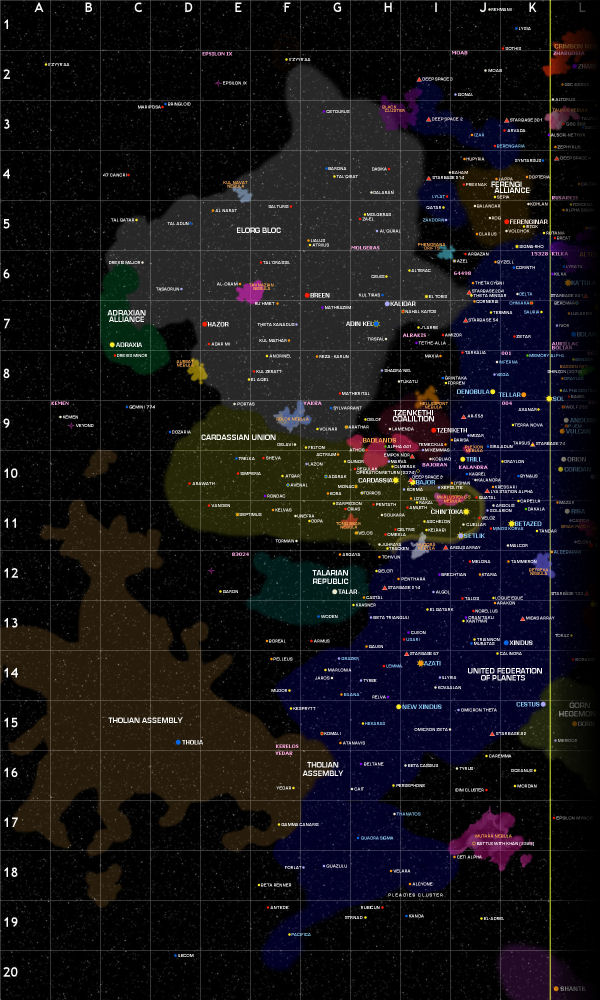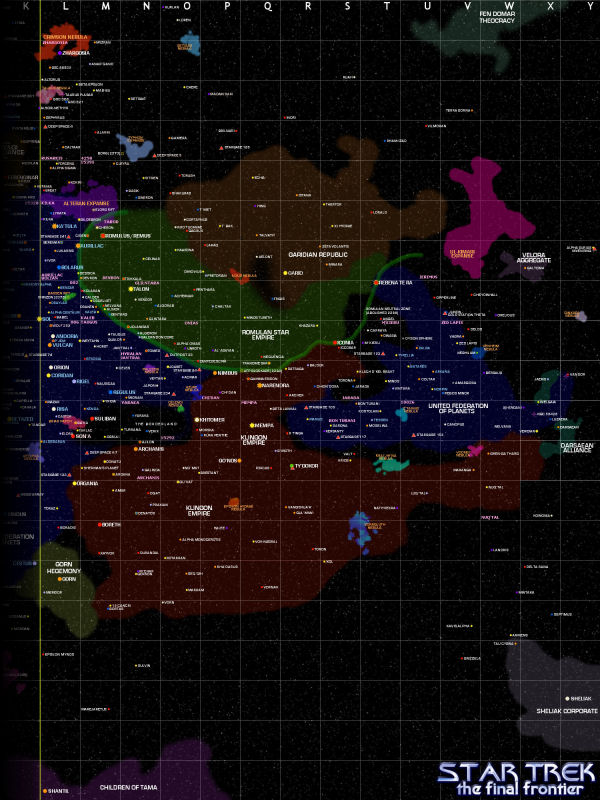01 - Stellar Cartography Guide
Created by Commander Morgan Tarin on 09 Oct 2023 @ 2:08pm
Table of Contents:
- 1.1 Galaxy Classification Chart
- 1.2 Star Classification
- 1.3 Nebula Classification
- 1.4 Planetary Classification
- 1.5 Theater Maps
1.1 Galaxy Classification Chart
Figure 1.1.1 - SINGS Hubble Tuning-Fork (click to enlarge)
1.2 Star Classification
INTRODUCTION TO STARS
Stars are classified according to a spectral scale which measures the temperature of a star's protosphere. There are four main categories into which they are grouped, including main sequence stars, giant stars, supergiant stars, and white dwarfs. Other variations include brown dwarfs and neutron stars. Most stars found in the galaxy are main sequence stars which use a nuclear reaction to burn hydrogen and convert it into helium to create massive amounts of energy. Most of these stars spend almost their entire lifespan as a main sequence star, but turn into giants or supergiants when they exhaust their supply of hydrogen and then expand. Low-mass sequence stars typically turn into giants, and high-mass sequence stars turn into supergiants. After a giant expands to critical mass and sheds its outer layer, it implodes and leave remnants which become white dwarfs. In rare cases, a high-mass star will implode and create a black hole.
Figure 1.2.1 - Life cycle of a star

For each spectral class, there are ten subcategories, (0-9) with 0 being the hottest and 9 being the coolest. In order to classify a star, the spectral class must first be identified, followed by an exact assessment of its surface temperature. For example, an A0 is a Spectral Class A star that is burning extremely hot for its class, around 8,500 to 8,700 K. Stars are then sub-categorized by luminosity. Luminosity subclasses include: 1a (luminous supergiants), 1b (less luminous supergiants), II (luminous giants), III (normal giants), IV (subgiants), and V (main sequence and dwarf stars). Using the previous example, an A0V designation now tells us that the star is main sequence Spectral Class A star that is burning extremely hot for its class.
Figure 1.2.2 - The Hertzsprung-Russell Star Classification Chart

SPECTRAL CLASS O
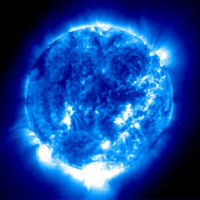
Class O stars are the largest and hottest in the galaxy, ranging anywhere between 50 and 60 times the size of Earth's sun with 100,000 times the luminosity. They also happen to be the rarest type in abundance, only accounting for roughly 0.00001% of all known stars. They are composed primarily of ionized atoms and helium, and can reach extreme temperatures anywhere between 30,000 and 40,000 K. Their intense surface temperatures give these celestial bodies a deep blue color. Due to the immense size and energy put out, they burn for only a (relatively) short period of time, only about 10 million years.
SPECTRAL CLASS B
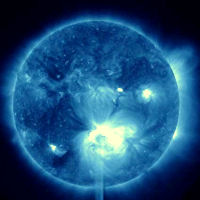
Class B stars are much smaller than Class Os, yet are still at least ten times the size of Earth's sun. They have a surface temperature of around 20,000 K which gives them a blue color and gives off a luminosity of about 1,000 Sols. Their composition is mostly helium but also has a light concentration of hydrogen as well. This allows them to live longer than Class Os, typically about 100 million years. Like their larger cousin, they are rare to find and only account for 0.1% of all known stars.
SPECTRAL CLASS A
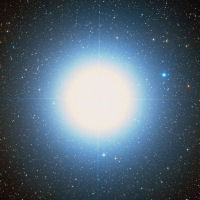
Burning bright white, Class A stars are smaller than Class O and B stars, however are still twice the size of Earth's sun and have 20 times the luminosity. Their surface temperature is usually near 8,500 K, and they are composed of strong concentrations of hydrogen and ionized metals. Their smaller size and composition allows them to live close to one billion years, and they are one of the most optimal star types when searching for habitable life in their solar systems. Though still rare, they account for 0.7% of all known stars.
SPECTRAL CLASS F
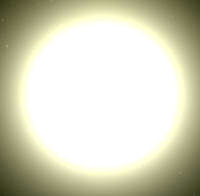
Class F stars are in the middle of the spectral chart yet still only compose about 2% of all stars in the galaxy. Smaller than Class A stars, they are only slightly bigger than Earth's sun, about 1.5 times the size. Their surface temperatures are anywhere between 6,000 and 7,000 K which yields a luminosity of four Sols and gives they a white-yellow color. They are composed of a variety of elements including hydrogen, ionized metals, iron and even calcium. Their average life span is three billion years, and these stars are known to play host to diverse planetary bodies.
SPECTRAL CLASS G
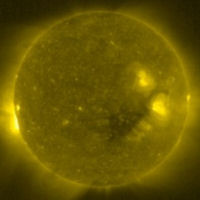
Class G stars are yellow in color and are the same type as Earth's sun, Sol. A good balance between size and longevity, these stars can live up to 10 billion years with sustained surface temperatures of 5,000 to 6,000 K. They are composed of hydrogen, ionized calcium, and ionized and neutral metals. Their mass and radius are within +/- 0.1 Sols. They make up 3.5% of all known stars, and can be excellent breeding grounds for life-sustaining solar systems.
SPECTRAL CLASS K
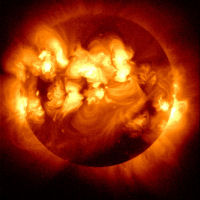
Smaller and cooler than the Earth's sun, these stars have lower surface temperatures usually between 4,000 and 5,000 K. They produce an orange color which can vary depending on their composition, but their luminosity is only 0.2 Sols and they are roughly only 0.6 to 0.7 Sols in radius and mass. Composed of less hydrogen and more metals, they are able to survive for much longer than most stars, up to 50 billion years. They are somewhat common in the galaxy and account for 8% of all stars. Unfortunately, due to their low heat/energy output, they rarely have many habitable planets in their solar systems, if any.
SPECTRAL CLASS M
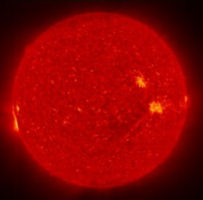
Class M stars are the most populous in the galaxy and make up almost 80% of all stars. This is because they also happen to live the longest, sometimes in excess of 200 billion years. Unfortunately, these stars are cold and small, with surface temperatures only around 3,000 to 3,500 K. They are less than half the size of Earth's sun, and produce only 0.01 Sols of luminosity. Habitable planets are almost never found in these systems, however their enormous life span allows them to accumulate many celestial bodies which fall into orbit over time. Class Ms are red in color and composed of very little hydrogen, and mostly ionized atoms and helium.
GIANTS (RED)

Giant stars are low-mass stars which are at the end of their lifespan. They are created when a main sequence star runs out of fuel and the surface begins to expand. Compared to supergiants, giants are small, and are mainly composed of Spectral Class G, K, or M stars, with surface temperatures ranging anywhere between 3,000 and 10,000 K. Typically they are between one and five times the mass of Earth's sun, but have a much larger radius of 10 to 50 Sols due to their expanded surface. Despite their lower surface temperatures, their luminosity is high, between the ranges of 50 to 1,000 Sols, and they are very bright. Giant stars compose about 0.4% of all known stars, and have a lifespan of about one billion years.
SUPERGIANTS
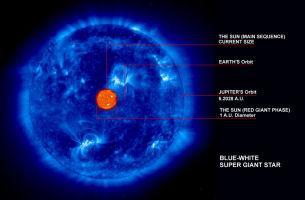
Supergiant stars are similar to giant stars, however are the result of high-mass stars which are nearing the end of their lives. They are created through the same process as giants and require a main sequence star to run out of fuel prior to expanding. Due to their huge size, supergiants are made of Spectral Class O, B, A, or F stars. Their surface temperatures are very hot and can range anywhere between 4,000 and 40,000 K. Compared to giants, supergiants are huge, and possess a mass between 10 and 70 Sols, with a radius of 30 to 500 Sols. Their luminosity is immense, from 30,000 to 1 million Sols, yet they do not live very long before imploding and typically last 10 million years at best. They are very rare and only make up 0.0001% of all stars in the galaxy.
WHITE DWARF
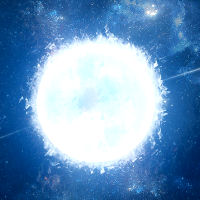
After a giant star becomes unstable and loses mass, it blows its surface and outer layers off creating a planetary nebula, yet the core still remains. The star now becomes a white dwarf. They are not very large and typically have a mass of only 0.1 to 1.4 Sols, and a tiny radius under 0.01 Sols. Luminosity is also very low but surface temperatures can still reach anywhere up to 10,000 K. It takes billions of years for a white dwarf to cool, but it is theorized that once this occurs, white dwarfs will turn into black dwarfs, a non-radiating ball of glass. No black dwarfs have been found to exist, therefore it is assumed that the universe is simply not old enough for this process to have taken place. For the time being, a white dwarf represents the final stage in a star's life.
BROWN DWARF
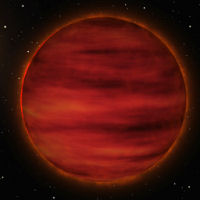
Brown dwarfs are commonly referred to as failed stars. This is usually because, for some reason or another, they lack the required mass to initiate the hydrogen-nuclear reaction necessary to turn into full stars. They still put out substantial heat, but nothing above 2,500 K and are more akin to a hot planet than a star. They are typically no bigger than Earth's sun, and have extremely low luminosity, 0.004 Sols at best.
NEUTRON STAR

A neutron star is the remains of a supernova. They are created when the core of a massive star collapses on itself during the explosion, and as their name suggests, they are composed mostly of neutrons. Tiny in size and radius, they have incredible mass and can generate enormous gravity wells despite their deceptively small appearance. Neutron stars are no larger than a small city, yet have the mass of half a million Earths. They are one of the densest objects known to exist.
Pulsars: Pulsars are neutron stars which emit visible beams of electromagnetic (EM) radiation due to their highly-magnetized nature. Similar to how a lighthouse functions, pulsars emit beams of light which can only be seen as the star rotates through certain angles.
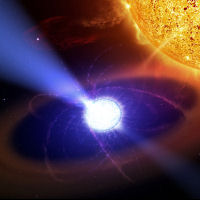
1.3 Nebula Classification
INTRODUCTION TO NEBULAE
Nebulae are extremely large interstellar clouds which contain a variety of ionized gasses, dust, hydrogen, helium, plasma, and other elements. They are found throughout the Milky Way galaxy and come in many different shapes and sizes, and contain different properties according to their specialized classification. The high concentration of stellar matter (dust, gas, etc.) present within these nebulae tend to naturally clump and stick together which eventually leads to the formation of celestial bodies over periods of millions of years. As such, nebulae are often considered to be 'stellar nurseries' - places where planets, comets, asteroids, and (most importantly) stars can form. They are essentially prime real estate for the building blocks of known stellar matter.
Below are the various main classifications for different types of nebula. In addition to the main classification, many nebulae contain one or more sub-classifications, usually according to their unique locations and individual properties. For example, a Class A emission nebula might be a standard one of its type, or it may possibly a Class A Type 2 (Disruptive) nebula which contains additional properties which interfere with certain biological and/or technological functions. Just like humans, each nebula in the universe is different, and it is important to understand and analyze these cosmic clouds as we explore the galaxy.
CLASS A - EMISSION NEBULA
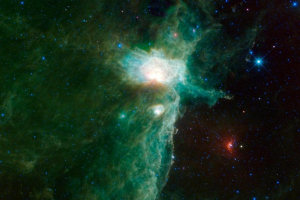
Class A nebulae are referred to as Emission nebulae. They are generally the largest type of nebula, usually spanning 100 to 5,000 light years in diameter, and can be visually identified from over a sector away. These nebulae are often so large because they usually contain a Class B H II Region nebula within, which is a smaller and more condensed cloud where star formation typically occurs. Emission nebulae tend to linger between one and two million years before they dissipate, and have an average temperature of 10-20 K. Containing a mixture of green, red, and blue coloring, Class As are mainly composed of hydrogen, helium, and oxygen, and are called 'emission' nebulae due to their high concentrations of plasma which are similar to that emitted by modern-day starships.
CLASS B - H II REGION
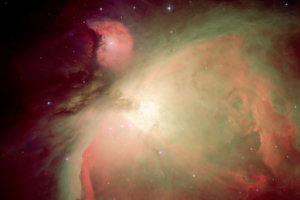
Class B nebulae are commonly referred to as H II Regions. H II Regions are usually found within Class A Emission nebulae, and are primarily made of high concentrations of hydrogen and helium - the building blocks of star formation. As such, Class B nebulae are considered to be stellar nurseries, and these types of nebula can birth thousands of stars over their lifespan of one to two million years. Red and pink in coloration with a hot average temperature of around 10,000 K, H II Regions are usually 20 to 2,000 light years in diameter.
CLASS C - BOK GLOBULE
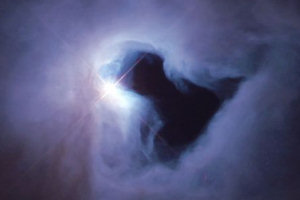
Small, dense, and compact, Class C nebulae are the densest type of stellar cloud and are ideal for star formation due to their extreme concentrations of hydrogen, helium, and carbon. Spanning only a light year or two in diameter and only lasting one or two million years, Bok Globule nebulae are where the majority of binary and trinary star systems form. The average temperature in a Class C is relatively tame, only about 3 K, and their coloration is usually dark gray or black, making them difficult to detect with the naked eye.
CLASS D - REFLECTION NEBULA
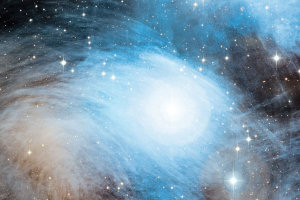
Class D Reflection nebulae are the longest-living nebulae known to exist, with the average lifespan being anywhere between 10 million and 10 billion years. Their name derives from their reflective properties which are a result of large concentrations of dust and other reflective material such as iron, nickel. Hydrogen and carbon are also present but although star formation can occur within Class D nebulae, it is more common to see nearby stars being brilliantly reflected within the nebula. Reflection nebulae are usually blue, cyan, and purple in hue, and have a high temperature of 25,000 K due to the heavy amounts of dust present which are able to trap and retain heat.
CLASS E - PLANETARY NEBULA
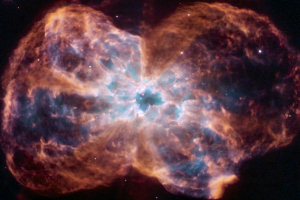
Class E nebulae are bright orange, green, and blue clouds of matter which form during the final stages of a star's life. Despite their name, they have virtually nothing to do with planets, but rather are created when a star loses its ability to maintain nuclear fusion. The degradation of this energy reaction expels gas and stellar matter into space around the star, which ultimately creates the nebula itself. Planetary Nebulae are short-lived and only last about 10,000 years. They are also very small and no bigger than one light year in diameter, yet due to their close proximity to the failing star, they are hot with an average temperature of around 10,000 K. They are composed of primarily of carbon, nitrogen, oxygen, and calcium.
CLASS F - DARK NEBULA
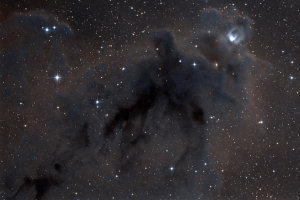
Possessing very strong magnetic fields and virtually impossible to visually identify against the black backdrop of space, Class F nebulae are appropriately named 'Dark Nebulae' due to their deep black color. They are generally larger-sized nebulae which span about two hundred light years across, and are composed primarily of hydrogen. The average temperature of a Class F nebula is only about 7 K, however they are very dense and can pose significant navigational problems for nearby starships due to the high gravimetric forces which result from the cloud's microwave (EM) radiation.
CLASS G - SUPERNOVA REMNANT
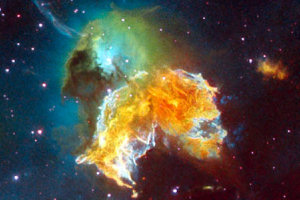
One of the most awe-inspiring types of nebulae known to exist, Class G nebula are bright orange and blue-colored clouds which are the remains of a giant star. These Supernova Nebulae consist of ionized hydrogen and oxygen which are the leftovers of a star's implosion process. Extremely hot in temperature - up to 10 million K - and lasting up to one million years, these colorful clouds are usually one to three light years in diameter, depending on the size of the star which went supernova.
CLASS H - NOVA REMNANT
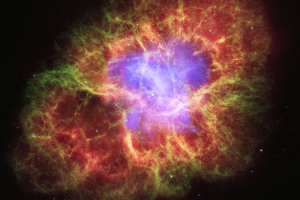
A Class H Nova Remnant nebula is the little sister of the larger Class G Supernova Remnant. Virtually identical in color and composition yet smaller in scale, Class H clouds are produced when a star's fusion process fails and goes nova. They do not last long, only about three hundred years, and are only half a light year in diameter. They are also much more common than Class G nebulae and are substantially cooler, only about 5,000 K. Composed of ionized hydrogen and oxygen, they vary in color but are usually identifiable by their orange and blue hues.
CLASS I - SOLAR NEBULA
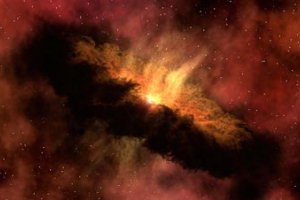
Class I nebulae are commonly referred to as 'Solar Nebulae' because they are very small clouds where young stars and their solar systems form. Solar nebulae are typically only 100 AU in diameter and are created when a new star's gravimetric forces pull and attract stellar debris around itself. This debris eventually clumps and mashes together within the Class I nebula, leading to the formation of celestial bodies such as planets, comets, asteroids, and moons. They are composed of hydrogen, helium, and oxygen, and last about two million years. Their coloration is usually yellowish-orange, and the average temperature within the nebula is around 150 K.
CLASS J - WOLF-RAYET NEBULA
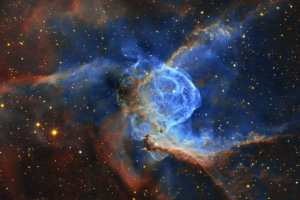
Class J Wolf-Rayet Nebulae are unique to Spectral Class O stars, and form when an occasional strong stellar wind depletes the star's mass. The high winds blast the star's core materials away, which are then recaptured by the star's gravity to form a large halo-like cloud around the star. They are small in size, only half a light year, and are composed of the same materials as the star - helium, oxygen, and carbon. Bright blue in color similar to all Spectral Class O stars, these nebulae last approximately one to two million years and have an average temperature of 25,000 to 50,000 K.
CLASS K - INVERSION NEBULA
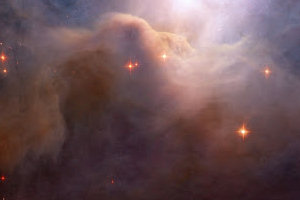
Class K Inversion Nebulae are extremely rare and very unstable. They are formed by highly-concentrated strings of plasma and only last for a few years, usually five to ten before the plasma dissipates into space. They are also very small, about 200 AU which is slightly bigger than a solar nebula. Bright pink in color, they have an average temperature of 10,000 K.
SUB-CLASSIFICATIONS
- Type 1 - Protomatter: a nebula which contains large amounts of protomatter, a highly dangerous and unstable form of matter.
- Type 2 - Disruptive: a nebula which contains high amounts of EM (microwave) radiation and can interfere with technological and biological properties.
- Type 9 - Shadow: an extremely dense nebula composed of elements which produce sensor shadows, also known as 'sensor ghosts'. With prolonged exposure, shadow nebulae are also very dangerous and disruptive to humanoids' nervous system.
- Type 10 - Deuterium: a nebula which contains high amounts of deuterium (heavy hydrogen). Most starships are able to collect deuterium and convert it into fuel using bussard collectors, which makes these types of nebulae ideal for replenishing impulse and warp core reserves.
- Type 11 - Argon: a nebula which contains amounts of argon. Other elements are also present, including thetazenon, fluorine, and sirillium.
- Type 13 - Mutara: a nebula containing ionized gasses which, due to its unique properties, contains high amounts of static discharge. This static discharge is known to severely interfere with a starship's systems, and often causes shields and sensors to become severely degraded, if not completely inoperable.
- Type 16 - Protostellar: a nebula which is in its early stages of formation. Due to the changing and formative nature of the nebula, it often contains many pockets where matter is in a state of particle flux.
- Type 17 - Sirillium: a nebula which contains high amounts of sirillium, an extremely volatile element which can be ignited by common energy weapons.
1.4 Planetary Classification
INTRODUCTION TO PLANETS
In the Milky Way Galaxy there are 325 billion stars and not all of these contain planets or anything more substantial than clouds of dust. At current count, there are 432 billion planets of which 175 billion are potentially habitable. All planets can be classified using the scale below. Planets usually orbit a center of high gravity, either a star (or multiple) or another large body. It isn't unheard of for systems to even possess two sets of binary stars orbiting each other. While planets orbit at varying distances from their stars, those best suited to life occur in the temperate zone, warmed by the star's fusion but not too close as to irradiate the planet's surface. In lucky circumstances, native life can flourish, however less than 500,000 known planets have evolved their own biological ecosystems. Most easily-habitable planets within the Federation are colonised in addition to several less naturally-suited words which were terraformed into a more suitable class.
CLASS A - GEOTHERMAL

Class A planets are small, normally less than 10,000 km in diameter and extremely geologically unstable. Because of this, they tend to be quite young planets, normally only in their first billion years of existence. Due to volcanic activity they have high amounts of carbon dioxide in their atmosphere which keeps them extremely hot. When this activity stops, the planets tend to cool and become Class C planets. Even protected surface missions are not advised on these worlds and there is no natural life of any sort.
CLASS B - GEOMORTEUS

Class B planets are small, normally less than 10,000 km in diameter and highly unsuited for humanoid life. They are normally quite close to the system's core with thin atmospheres of helium and sodium. Due to this make-up and the close distance to the sun or suns, they have mostly molten surfaces. During daylight, because of the thin atmosphere, it can reach over five hundred degrees Kelvin, and at night can get as low as 73 Kelvin. With these extremes, life has never been known to evolve on these planets, however they have been known to occasionally support bacterial life on their surface resulting from asteroid impacts.
CLASS C - GEOINACTIVE
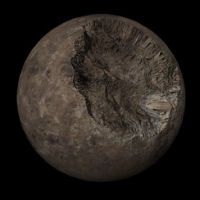
Almost all Class C planets begin their lives as Class A planets and change once they stop being geologically active. Losing the atmosphere they had, they become completely barren, just a rock in space. Being more stable than Class As, they can be colonized with pressure domes and mined for resources. They are still normally less than 10,000 km in diameter and have limited gravity.
CLASS D - DWARF
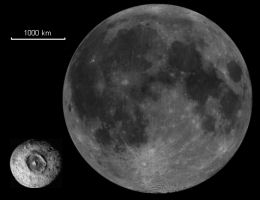
In some cases barely even planets, these worlds - as small as a hundred kilometres in diameter up to four thousand - are made up of mostly of ice. Most planetary moons fall into this category as do most larger asteroids in a system's Kuiper Belt. Most do not support any sort of life and generally have minimal mineral resources but can be colonised via pressure domes.
CLASS E - GEOPLASTIC
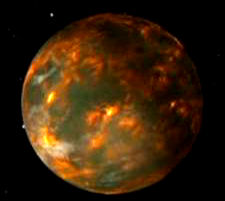
Class E planets are the first stage of the development of a habitable planet. From core to crust they are molten but cooling. They can have a range of atmosphere but tend to possess high levels of carbon dioxides, hydrogen and helium. Being larger than a Class B at between 1M and 1.5M kilometers, they are more able to retain their atmosphere while still having very high temperatures and being hazardous to almost all forms of life. If the planet starts to cool to the extent they develop a crust, they become a Class F planet.
CLASS F - GEOMETALLIC

Class F worlds are planets at the most basic start of life. As volcanic activity starts to cool down and the crust solidifies, if a fluid medium such as water can form, life can as well. While still active and hostile to most humanoid life due to high levels of carbon dioxide and unstable surface temperatures, for a few minutes the air can be breathable. This class will normally only form in a system's temperate zone, else they remain Class E for the rest of their existence. As the planet cools further and becomes volcanically stable, they transition to Class G.
CLASS G - GEOCRYSTALLINE
Class G planets are habitable. While volcanic activity is still sporadic, the cooler and older planet is able to sustain complex life. Algae and mosses start to form, along with soft animal life such as jellyfish. Oxygen is in abundance along with nitrogen and, while there wouldn't be food for them, humanoids can survive on these worlds indefinitely. They are rocky with developing oceans and seas but are silent worlds. Depending on state and position of the planet, a Class G can become a Class H, K, L, M, N, O or P world.
CLASS H - DESERT
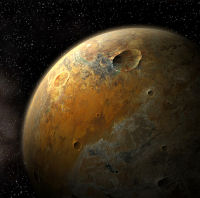
Class H planets are almost entirely desert; at most they have only 20% of their surface covered in water. Young versions of these planets - four to six billion years old - tend to be rocky while those that are older tend to be covered in sand. Life can evolve here but it is limited. Plants tend to be small as do animals. Weather tends to be dry with sandstorms and few clouds. Some worlds have snow at their poles and can experience wider variations of weather. They are often incapable of naturally supporting populations above a hundred-million humanoid lifeforms.
CLASS I - ICE GIANT (URANIAN)
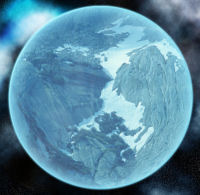
Class I planets are completely different from smaller molten core planets - instead, their cores are mostly made of rock and ice. Layers of water, methane and ammonia make up the rest of the planetary body. They are large planets between 35M and 100M kilometers and tend to only form of the fringes of a solar system. They also tend to have very strong magnetic fields at each rotational pole.
CLASS J - GAS GIANT (JOVIAN)
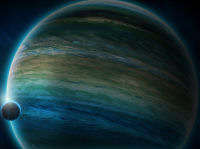
If Class I worlds are large planets, Class Js are giants. At between 50M and 500M kilometers the largest of them are on the verge of becoming dwarf stars. Made up of liquid and gaseous hydrogen, their cores are composed of hydrogen compounds. Winds of over 600 kph lick the surface during storms making them extremely hazardous. Due to their size and gravitational pull, they can often form rings of matter from objects that fall into their orbit. Forming in the medium to outer areas of a solar system, they tend to orbit closer to the star than a Class I planet.
CLASS K - ADAPTABLE

Class K planets are much like their Class H counterparts except the atmosphere is much weaker. Only capable of supporting single cell life, they are not very habitable and fluctuations in temperature would kill most humanoids over a few days. They can, however, be colonised with pressurised domes.
CLASS L - MARGINAL
Class L worlds are young planets that haven't yet developed animal life. They tend to be covered in forests and plants that are broken down by simple organisms and fungi. Water is not common and those with less than 20% surface coverage fall to being Class H. These planets, however, are perfect for colonization and terraforming.
CLASS M - TERRESTRIAL

Class M planets are perfect for most humanoid life. They are stable and can often evolve humanoid life and other complex animal life. The land masses are mostly rocky but covered in soil and vegetation, with thirty to eighty percent of the planet covered in water. The only other requirements for a terrestrial classification are a breathable oxygen-nitrogen atmosphere and a temperate climate. Most species in the known universe originated from planets of this class. They are found within the habitable zone of a star that allows their development.
CLASS N - REDUCING
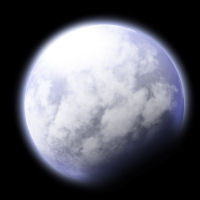
Class N planets are failures when compared to Class Ms. While they orbit within a similar location inside a star's ecosphere, they are barely habitable for any race. They are barren with temperatures that reach over 700 Kelvin. Massive amounts of carbon dioxide cover the surface and build up a pressure a hundred times that of an M Class world. This means that from space, it seems like the planet is entirely covered in clouds.
CLASS O - PELAGIC

Class O planets are covered in water - to qualify, a planet needs to be more than 80% surface water. Due to the water they absorb and store, a lot of the heat still radiates from the surface, making the atmosphere very charged. They can support vast aquatic ecosystems as well as tropical islands on peaks above the water. These planets tend to contain the most biological life compared to other planet classes, and teem with vast variations of species. While most do not evolve humanoid life, some do, though they are normally aquatic.
CLASS P - GLACIATED
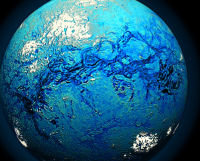
Class P planets are almost exactly the same as Class Os, only due to the atmosphere or star it orbits, it is cold. Average temperatures never reach above zero degrees centigrade therefore the entire planet is covered in ice. In this state, the ice reflects heat rather than absorbs it, and life finds it much harder to survive here. With preparation, humanoids can survive on these worlds but there are few food sources and without protection most would die to exposure within minutes.
CLASS Q - VARIABLE
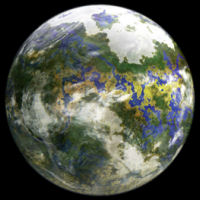
Class Q planets are rare occurrences that, due to unstable orbits or stars, constantly experience changing surface conditions. Due to their orbits, the surface can both freeze and boil, be suitable for life and be hostile. Some are less pronounced and dapple between different ecospheres with deserts of a few miles next to tiny rainforests and swamps. This eclectic mix is more often caused by multiple stars in a system unlike the more wide spread extremes due to the planets orbit. Because of these extremes, life rarely evolves due to the instabilities, and colonisation is problematic.
CLASS R - ROGUE
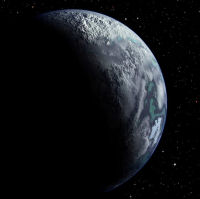
Class R planets are thrown from their home system by some event and then drift through space without a star. They often lose their atmosphere and life dies out, and even if they don't lose their atmosphere they normally freeze unless the planet is able to produce its own heat from its core. These planets are rare and almost never colonised as their galactic position is rarely stable.
CLASS S - GAS SUPERGIANT
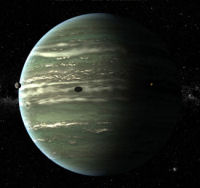
These worlds are vast planets found in a wide range of gaseous colours. They are orders of magnitude larger than Class J gas giants and all contain the necessary matter to become stars but by fluke have failed. Their liquid metal core is under such intense pressure that it can produce its own light which can sometimes flare out of the hydrogen and helium surface.
CLASS U - GAS ULTRAGIANT
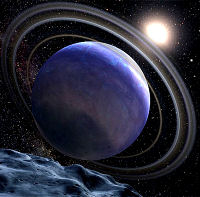
If a Class S planet gains matter by consuming other planets or dust in a star system, it can keep growing to a Class U. These planets are the size of small stars and are right on the edge of critical mass. Once they reach it, the planet collapses in on itself, becoming a young star.
CLASS Y - DEMON
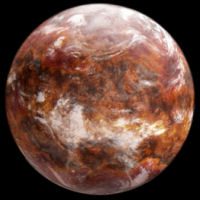
Class Y planets come in a range of sizes, and while they have atmospheres, they are completely hostile to almost all known life. Radioactive and toxic air scours the surface at huge speeds. Temperatures swing between huge highs and lows and these worlds are almost constantly covered in harsh storms. It would almost be better to be exposed to space than the surface of a Class Y.
CLASS Z - ZION
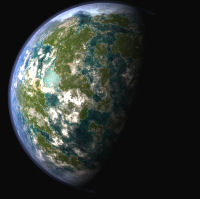
Similar in almost every way to a Class M world, Class Z worlds are impossibly rare - only two have been known to exist and only one still exists. Perfect for normal humanoid life with the absolute right balance of radiation, light, atmospheric gasses, low heavy metals and the right bacteria, the average life form can easily live twice as long on its surface as a Class M. The climate is balanced and hostile weather is very unusual; the temperature over most of the planet is between 15-30 degrees centigrade. It is generally accepted that these planets are created rather than naturally developed, however exactly how is currently beyond known science.
1.5 Theater Maps
Figure 1.5.1 - Starfleet operational theater (click to enlarge)
Figure 1.5.2 - The Alpha Quadrant (click to enlarge)
Figure 1.5.3 - The Beta Quadrant (click to enlarge)
Categories: Science Manual


